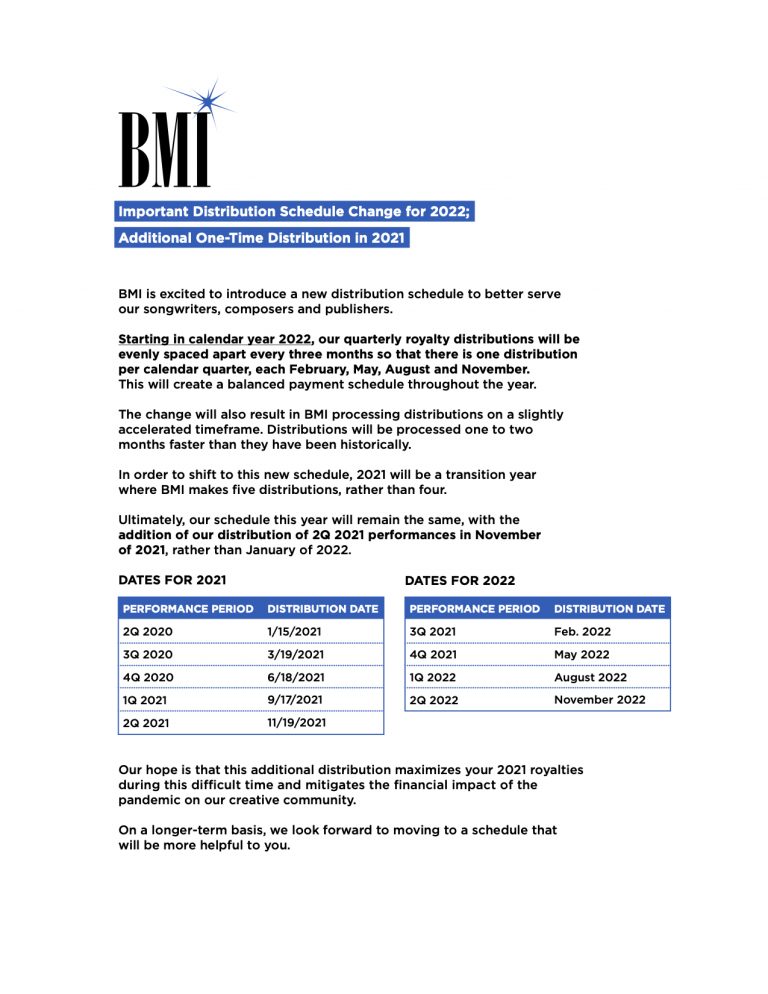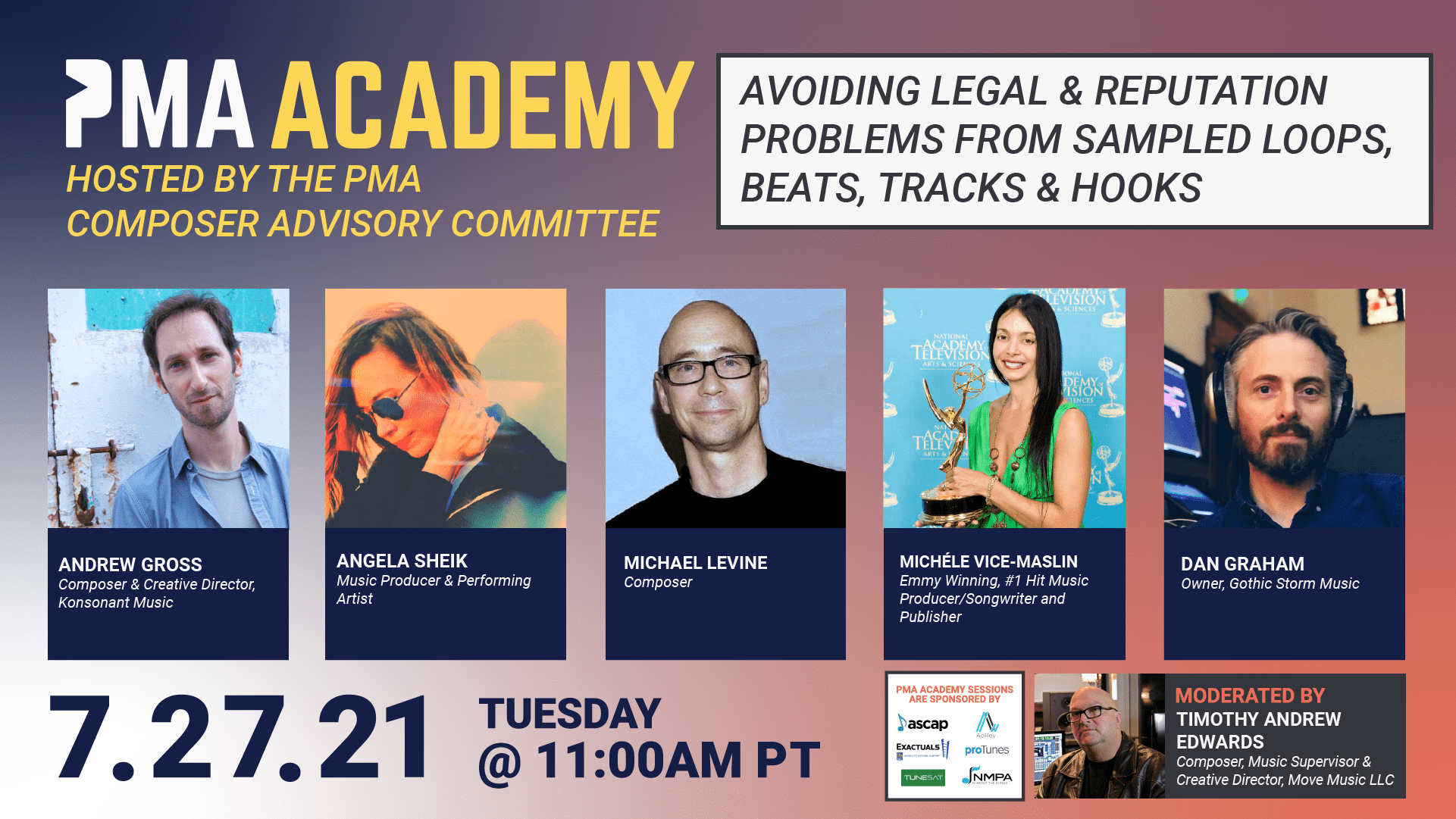The Music Creators North America (MCNA) alliance and its global affiliate the International Council of Music Creators (CIAM), together representing hundreds of thousands of songwriters and composers throughout the world, have recently launched a crucial, international education project designed to encourage all members of the music creator community to recognize the dangers inherent in assigning the rights in their works on a “full buyout basis.” I am writing to share their informative message below so that you may evaluate its application to your own career and circumstances:
To: All Music Creators
You may already be aware through personal experience that many music producers, distributors, and other music-related entities currently appear to be accelerating their attempts to utilize work-for-hire and other types of agreements to take advantage of uninformed music creators, insisting upon “full buyouts” of their musical works. Full buyouts, as currently defined, seek to acquire all rights and to eliminate any possibility of future royalty participation for creators beyond a one-time fee, even to the extent of eliminating the composer’s participation in the writers’ share of performing rights royalties.
In light of that troubling trend, we urge you to read the SCL’s current Buyout Study carefully (available at https://thescl.com/news/defining-buyouts/), and to discuss with your legal and other advisors the potentially devastating ramifications of full buyouts to your career. Naturally, all individual decisions concerning such matters should take into account the unique circumstances of each individual music creator. Due to the potential dangers presented by full buyouts, however, we suggest that before “selling” all rights in your work without the provision for future royalty participation in some form, the securing of personalized legal and accounting advice should be considered as absolutely essential to protecting your rights in the manner that is best for you.
To assist you and your advisors in evaluating various agreements that may be presented to you for signature, here are some examples of clauses that may currently be in circulation in various forms that should be subject to the highest levels of scrutiny:
- Example 1: Notwithstanding anything to the contrary express or implied in this Agreement, no further fees, royalties or other compensation (fixed or contingent) shall accrue to Composer in connection with the foregoing exploitations, and Composer shall have no claim in and to any income generated by Company or its affiliates or designees in connection therewith, it being understood that the one-time Fees (as applicable) constitute sufficient and valuable consideration to Composer for all such rights.
- Example 2: Except for the [one-time] fee payable pursuant to this paragraph, there shall be no other monies, including without limitation, any synchronization fees or any royalties of any kind (including without limitation, public performance royalties), payable to Composer in connection with the creation, acquisition and exploitation of the Musical Composition or any Services rendered by the Composer, including without limitation, in connection with any advertising, publicizing or exploitation thereof, regardless of the method, media or types of devices utilized for the exhibition or exploitation thereof.
- Example 3: Subject to Company paying Composer the Fees, all results and proceeds of the services provided hereunder by Composer will be created as a ‘work made for hire´ (for the purpose of U.S. copyright law and all other copyright laws throughout the universe) for Company. Accordingly, the following provisions shall apply to such “Work(s):”
- i. All rights, title and interests in and to the copyright and one hundred percent (100%) of the rights in and to the Work, including, but not limited to, the publishing, administration, synchronization and performance rights of the Work, will be exclusively held by Company. For the purpose of clarity, Company shall be entitled to collect one hundred percent (100%) of any and all income in connection with the exploitation of the Work.
- ii. Company shall own one hundred percent (100%) of the right, title, and interest in and to, including without limitation, the copyright of, the Works.
- iii. If or to the extent for any reason in any country, the Work is not recognized to be a work made for hire, then Composer hereby irrevocably and absolutely assigns to Company all rights (copyrights, rights under copyright and otherwise, whether now or hereafter known) and all renewals and extensions (as may now or hereafter exist) thereof, in and to such Work throughout the universe and in perpetuity, for all media/formats/methods/manner whether now or hereafter known.
- iv. For purposes of clarity, Company shall have no obligation to greenlight the Project, and in the event the Project is not greenlit (as confirmed by Company in writing), Company shall not have any obligation to pay Composer hereunder any further fees, and, all rights in and to the Work shall be frozen and may not be exploited by Company or Composer without the other party’s prior approval.
The scope of the language in the above examples can be read as running contrary to more than a century of custom and practice in the music industry. The traditional safeguards that such clauses seek to eliminate have for over 100 years served to protect and defend composer and songwriter rights, and to support the abilities of Collective Rights Management Organizations (ASCAP, BMI, etc.) to collect and distribute to music creators the revenue those rights generate when works are performed and enjoyed by the public. It bears repeating that what’s important for you and your advisors to consider is that if you give away all rights in the manner of a full buyout, you are giving away any chance of future income from your music for the project, even as the producers go on to exploit the work and earn potentially substantial revenues for themselves. As such, it is prudent to take seriously the potential threat presented to you by the full buyout trend as you discuss these matters with your advisory teams.
The Collective Management system was put in place many decades ago to ensure that as a project succeeds, music creators will have the opportunity to receive a fair share of the resulting proceeds. Your score or song is a hugely important part of the project to which you have contributed, and the Collective Management system recognizes and protects your right to fair remuneration with that principle in mind. The protections afforded by this system have been hard won, and continue to be fought for at great expense. We therefore also suggest that as you make your individual determination as to what terms are or are not acceptable, keep in mind the long-term effects that your determination may have on the health of the entire music creator ecosystem in which you earn your living.
Finally, in order to help us address the full buyout issue on a Congressional basis if necessary, we ask that if you see language like the above examples (and provided you are not contractually or otherwise prevented from doing so – check with your legal advisors in this regard prior to revealing any information), please bring it to our attention. This will assist us in building a database of such clauses that may be extremely useful in helping to defend your rights, and those of all other music creators, in future legislative initiatives.
Members should also be reminded that their ability to collect performance royalties is by custom and practice, as embodied in their contract. There is nothing in the Copyright Law that mentions “writer royalties”, so there must be language in the contract stating clearly that the writer has the ability to collect their share of performance royalties directly from their PRO.
We look forward to your input on this important issue, and to your assistance in carefully monitoring the situation in anticipation that seeking governmental assistance and oversight may be necessary to fully protect your rights to fair remuneration.
In regard to the collection of the data referred to above, the PMA will be pleased to receive and pass along to MCNA any such information you may wish to convey. Please, however, remember to check first with your legal advisors to ensure that to do so is permissible under the terms of your agreement, and pursuant to other applicable facts and circumstances. Such information can thereafter be delivered to us at morgan@pmamusic.com or submitted below.





